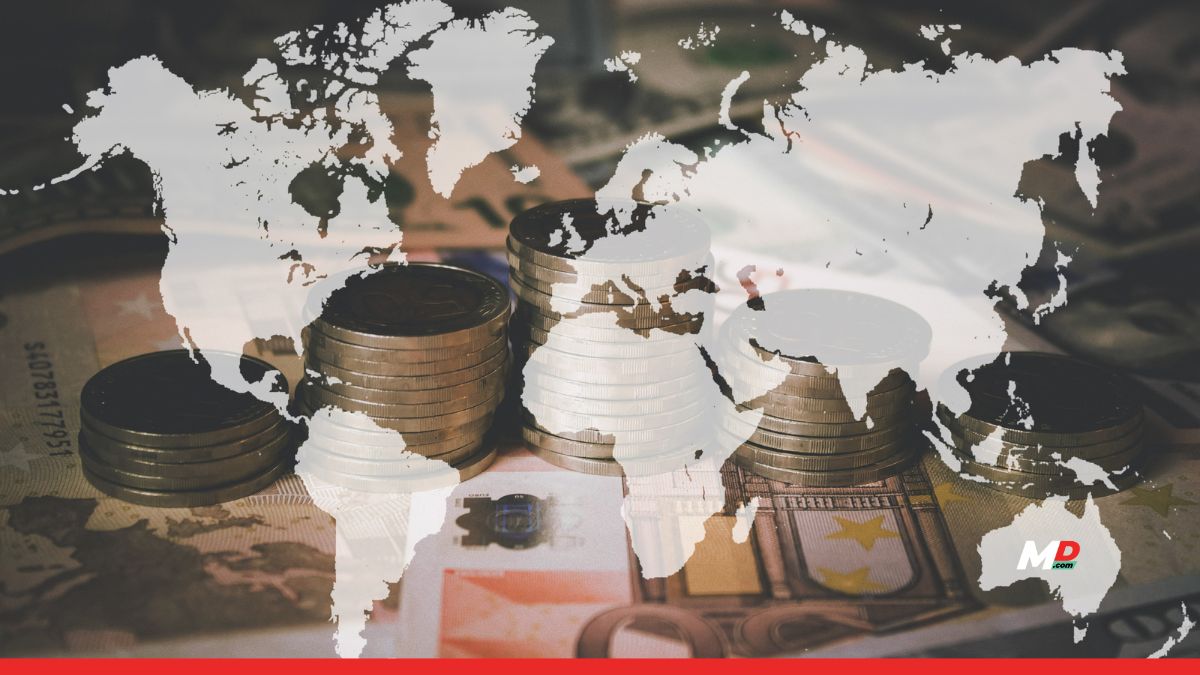Published
8 months agoon
By
Ann Uruvath
The ripple effects of U.S. President Donald Trump’s revived tariff strategy are no longer hypothetical. With key international organizations, notably the International Monetary Fund (IMF), issuing lowered global growth projections, the economic cost of these policies is becoming painfully evident. Intended to protect American industries, the tariffs are instead shaking confidence, disrupting trade, and driving up prices, not just in the United States but across the world.
The American Slowdown and Its Triggers
The IMF’s downgrade of U.S. growth for 2025—from 2.7% to 1.8%—reflects a convergence of policy-driven setbacks. Central to this deceleration is the sudden imposition of tariffs on major trading partners, including China, the European Union, and Mexico. While Trump’s administration framed these moves as protectionist measures aimed at correcting trade imbalances and revitalizing domestic manufacturing, they have inadvertently strained America’s own economic machinery.
Supply chains, built over decades to optimize global efficiency, have been disrupted. American companies reliant on parts or raw materials from abroad are facing delays and rising input costs. Notably, Boeing’s cancelled aircraft orders from China exemplify how vulnerable high-stakes industries are in the crossfire of tariff retaliation.
This has bled into consumer markets. With goods becoming more expensive and inflation creeping upward—projected to hit 3% by year-end—consumer confidence is declining. Spending, which contributes about 70% to U.S. GDP, is beginning to retract. Simultaneously, market volatility has surged as investors react to the policy unpredictability. Stock sell-offs and cautious investment are becoming more common, increasing the risk of recession.
The IMF has noted that the probability of the U.S. entering a recession in 2025 has jumped from 25% to 37%. Some private economists suggest the odds could be as high as 50%, warning that the effects of continued protectionist measures may not be fully reflected in current forecasts.
India Holds Steady Amid Global Strain
Though not untouched, India has emerged relatively resilient in the face of global economic headwinds. Its growth forecast has been slightly lowered by the IMF to 6.3%, from a previous 6.7%, but this remains above average among major economies. The Reserve Bank of India maintains a slightly more optimistic 6.5% growth estimate.
India’s comparative stability stems largely from sustained rural demand, ongoing infrastructure investments, and a growing digital economy. Additionally, India’s limited dependency on global manufacturing chains has shielded it from the kind of supply chain shock that the U.S. and China are experiencing. However, export-driven sectors and foreign investment inflows have slowed, underscoring that even resilient economies are not immune to global instability.
A Tighter Global Outlook
The broader international scene is marked by widespread concern. Global trade growth is projected at just 1.7% in 2025, a steep decline from 3.8% the year before. For an interconnected world still recovering from the aftershocks of the COVID-19 pandemic, this slump could not have come at a worse time.
China, the main target of Trump’s tariffs, has seen its growth forecast slashed to 4%, from 4.6%. Tariffs on Chinese goods have now reached an average of 145%, with China retaliating by placing 125% tariffs on U.S. imports. These retaliatory measures are hitting American farmers, technology firms, and the automotive industry particularly hard. Meanwhile, the EU is projected to grow by just 0.8%, a troubling signal for a region already grappling with rising energy costs and fiscal fragmentation.
A major concern is the growing debt burden across advanced economies. The IMF warns that global debt-to-GDP ratios will rise by 2.8 percentage points, pushing overall debt above 95% of GDP. This breaches the European Union’s 60% threshold, a benchmark long considered a limit for financial health. As growth slows and revenues fall, many governments are forced to borrow more to maintain public spending—an unsustainable pattern if not addressed through long-term fiscal reform.
Governments Brace for Impact
Faced with this uncertainty, the IMF has called on national governments to take proactive steps to cushion their economies. This includes offering targeted support to industries most affected by the tariffs, especially those reliant on imports or exports now under strain.
It also involves difficult balancing acts. As interest rates rise—partly in response to inflation and investor wariness—governments will have fewer funds for public investments, education, and welfare. In some cases, spending will need to be redirected toward defense and security, particularly in light of escalating geopolitical tensions.
Foreign aid from advanced economies may shrink as donor nations turn inward to stabilize their domestic economies. This could disproportionately affect developing nations reliant on global assistance for health, education, and infrastructure.
Most critically, the IMF urges countries to prioritize transparency, prudent fiscal management, and trust-building policies. Where there is economic hardship, there must also be communication, fairness in taxation, and a long-term commitment to reform. Without this, the economic costs may spiral into political crises, deepening societal divisions.
The effects of these tariffs—and the uncertainty they bring—go far beyond economics. They are challenging the international system that has governed global trade since World War II. As the IMF’s chief economist Pierre-Olivier Gourinchas noted, “We are entering a new era.”


India’s Growth Engines Awarded: Most Preferred Workplaces 2025 Set New People-Centric Benchmarks


India’s Growth Engines Awarded: Most Preferred Workplaces 2025 Set New People-Centric Benchmarks


CBI books Anil Ambani’s son, RHFL in ₹228 Crore bank fraud case


Quick-Commerce Heading for Shakeout as Funding Model Fails, Warns Blinkit CEO


Venkatesh Iyer never looked at us during trials and I thought he was someone with a lot of attitude : Abhishek Nayar


Welspun One expands footprint with 46-acre Talegaon MIDC project; unveils ~INR 550 crore plan for a next-generation logistics park

